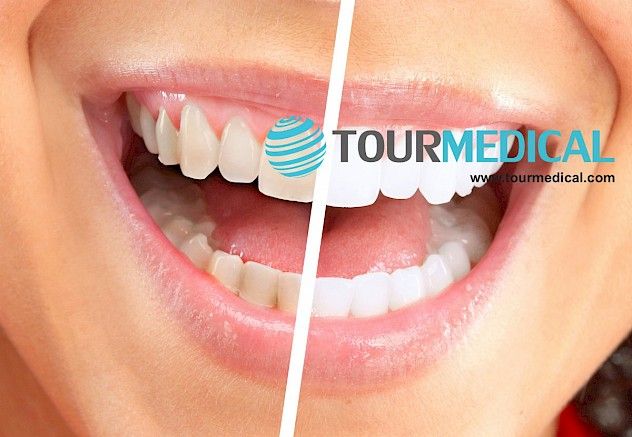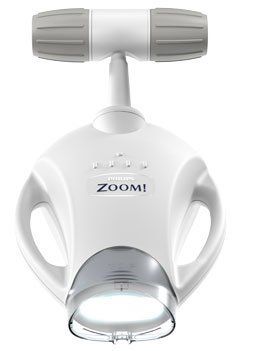Tooth Whitening
Tooth Whitening
 People generally have teeth whitening to lighten the colour of their teeth and to help remove stains and discoloration. Whitening is among the most popular cosmetic dental procedures because it can greatly improve how teeth look.
People generally have teeth whitening to lighten the colour of their teeth and to help remove stains and discoloration. Whitening is among the most popular cosmetic dental procedures because it can greatly improve how teeth look.
The color of natural teeth is created by the reflection and scattering of light off the enamel, ( the outer layer of a tooth) combined with the colour of the dentin under it. Our genes affect the thickness and smoothness of the enamel. Therefore the thinner enamel allows more of the colour of the dentin to show through. Tooth enamel contains pores that can hold stains so as with our daily diet routines we create plaque and a thin coating on the enamel that picks up stains.
It is also possible to have stains inside the tooth. These are called intrinsic stains. Intrinsic stains can be caused by exposure to too much fluoride as a child while teeth are developing or tetracycline antibiotics. Trauma may also darken a tooth. Unfortunately tooth whitening is most effective on the surface (enamel) of the tooth.
Other common reasons that your teeth may appear yellow :
- Smoking or chewing tobacco
- Drinking dark-colored liquids such as coffee, cola, tea and red wine
- Not taking good care of your teeth
- Ageing also makes teeth less bright as the enamel gets thinner and the dentin becomes darker.

Preparation
In order to have your teeth whitened a consultation must be carried out with your dentist as some dental problems can affect the success of tooth whitening. For example, cavities need to be treated before teeth are whitened. This is because the whitening solution can pass through decayed areas and reach the inner parts of the tooth and if your gums have receded, the exposed roots of your teeth may appear yellow or discolored.You may also have sensitivity to the whitening if you have tooth decay or receding gums. What should also be noted is that whitening also does not work on ceramic or porcelain crowns or veneers. If you have crowns or veneers that are discoloured, it is best to have them replaced.
Whether you chose to have your treatment carried out with a dentist or do it at home yourself, it is best to have your teeth cleaned first. This will remove any bacteria or plaque build up and any other substances that contribute to staining. Once this is done, the whitening procedure begins.
If you opt for whitening at home, your dentist can make trays to hold the whitening gel that fit your teeth. An In-office (chairside) whitening allows your dentist to use a more powerful whitening gel The trays and gel are generally left in for a few hours each day over a two or three week period. There are many over
the-counter kits also are widely available for home use. They provide trays and the gel, or whitening strips that stick to your teeth.Our advice is to talk with your dentist if you want to use these home products. Be sure to follow directions to avoid overuse and possible damage to your teeth and mouth.

How teeth whitening procedures are carried out
First your dentist will insert a cheek retractor to hold your lips and cheeks back in order to reach each tooth. Then they will apply a substance that covers and protects the gums and around the teeth.
A gel-like whitening solution is applied directly to the tooth surface and contains some form of hydrogen peroxide. Once the gel has been applied to all teeth a specialized light will shine on your teeth. This specialized light activates the the gel and allows bleaching to happen faster. This type of treatment usually takes about 40 to 60 mins. You may need another appointment depending on how severe the stains are. You may also experience sensitivity to the gel and choose to space out your treatment. A follow up appointment is not usually necessary unless you have some sensitivity during or after the treatment
For in-home whitening, your dentist will take impressions of your upper and lower teeth and will make custom trays to fit your teeth precisely. The trays need to fit well for best results so you should always try them on in the clinic before you take them home.
At home, it is best that you half fill each mouthpiece with a whitening gel your dentist provides. You will wear the mouthpiece for several hours every day. Many people achieve the amount of whitening they want within a week or two. However, you may need to wear the mouthpiece for four weeks or longer.
Whitening toothpastes are good choice to use to help maintain the level of whitening achieved.
It should be noted that whitening is not a permanent solution. The stains will come back if you smoke or consume a lot of staining foods or drinks. Without having a maintenence routine you may see the whiteness start to fade in as little as one month. If you avoid these sources of staining, you may not need another whitening treatment for 6 to 12 months. This can again be done at home or with your dentist.
Risks of teeth whitening.
TeethWhitening is unlikely to cause serious side effects, although some people's teeth may become more sensitive after a treatment for up to 12 hours after. You may get mild gum irritation as well. Women who are pregnant should not have their teeth whitened while pregnant. The effect of the whitening materials on the development of the fetus is not know but as the procedure is cosmetic, it should be postponed until after delivery. Whitening is not a one-time procedure. It will need to be repeated from time to time if you want to maintain the brighter color for longer.
 EN
EN